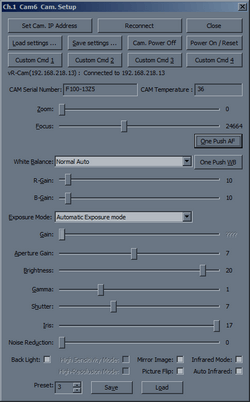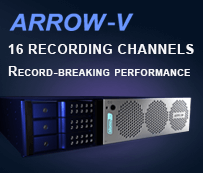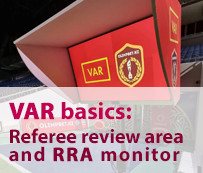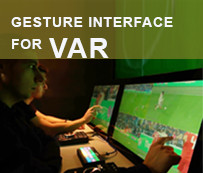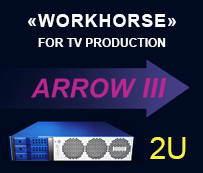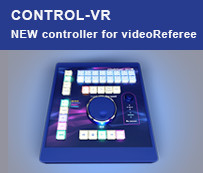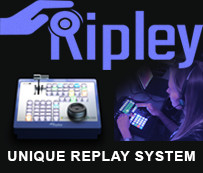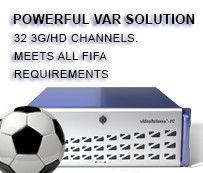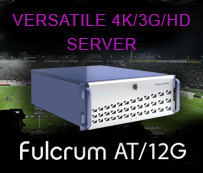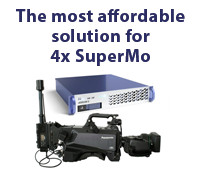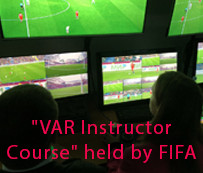Compact size, light weight, SDI output and affordable price – these are the undeniable advantages of Marshall CV503 cameras. For projects with a limited budgetIt they are a great tool. Slomo.tv, as a dealer of Marshall Electronics, recommends using these cameras in low-budget VAR (video assistant referee) projects. However, it is worth exploring and considering the peculiarities of using these cameras, imposed by their design solution reflected as a consequence of the low price.
One feature of the Marshall CV503 cameras that should be definitely taken into account is the absence of a built-in lens. The advantage of this solution is the lower price for the camera and its smaller size. The negative side is the need for completing the camera with a separately purchased lens, which needs to be carefully selected to provide a “correct” image (viewing angle, depth of field), matching the "geometry" of a particular arena. A good solution is to use zoom lenses, which allow the user to adjust the camera image. Unfortunately, the product range of zoom lenses for this camera is very limited, and there are no wide-range zoom lenses or wide-angle lenses. Also, most of the zoom lenses for the CV503 do not have a remote control. This means that for any setup – both when installing at a new place, and for image adjustment during operation – a specialist who will manually set up each camera is needed, including the cameras in the hard-to-reach places. Often clubs or sports arenas simply do not have such a specialist. This disadvantage becomes clearly evident not only during installation, but also during the sports event, since it is not possible to quickly access the cameras.
Due to the compact size of the CV503, the M12 bayonet-type lens mount is used. This solution significantly limits the choice of lenses for the camera. In turn, the compact size of the lens made possible by the use of this mount type imposes limitations on the image quality.
To provide a low price for CV503 cameras Marshall excluded the Genlock function - external synchronization - which ensures that all cameras in a video-refereeing system operate at the same frame and line frequency and are synchronized by phase.
Important, but not critical is the absence of the function for embedding external data into a special field of the AUX SDI video signal, such as information from the scoreboard controller. Transmission of such data requires the use of specific solutions in the video-refereeing servers. This imposes a limitation on the use of the camera for tasks that require precise synchronization of the events.
The CV503 camera uses a standard solution for supplying power – an external BreakOut cable with its own connector (used for power supply and control) and a 12W power supply unit. This involves having a 220/127V power supply near the camera or may require an additional power cable to be routed (routing a low-voltage power supply cable is not always possible due to the large voltage drop). Moreover, let’s not forget that the 220W power cables must be routed in accordance with all electrical safety standards. In sports arenas, especially in hard-to-reach places (under the roof of the arena or under the stands), such work complicates the installation of such cameras. The presence of additional, usually unpluggable power supply units reduces the overall reliability of the system.
It is also worth to understand that while the overall jitter level is quite low (0.06 UI for HD and 0.12 UI for 3G), the Marshall CV503 cameras in 3G mode have a very poor eye diagram and prohibitive value in four of the six jitter measurements.
To avoid problems, it is worth to conduct in advance tests of cameras with a coaxial cable of the required length and with connectors that will be used for the installation. For transmitting SDI video over long distances, the use of Fiber optics and SDI <-> Fiber converters with built-in reclockersbest is optimal. For medium lengths, we recommend using SDI reсlockers to reduce jitter and restore signal characteristics. If the distance to the server is short enough, using a high quality coaxial cable can be sufficient.
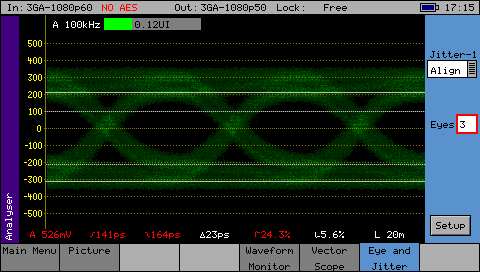
Marshall CV503-WP: 3G-SDI signal Measured with PHABRIX SxE |
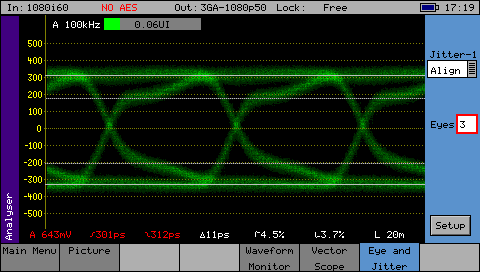
Marshall CV503-WP: HD-SDI signal Measured with PHABRIX SxE |
When working in HD mode, the camera shows a noticeably better performance and allows the use of coaxial cables over quite long distances.
If any of mentioned Marshall CV503 camera features are crucial for the project or can be an obstacle to their use, we recommend using mini-II-vR-Cam, specialized slomo.tv cameras designed for video-refereeing in various sports.
The slomo.tv mini-II-vR-Cams are controlled and powered via Ethernet interface (Power over Ethernet technology). To provide such connections, standard inexpensive PoE network devices are used. Since both the power supply and the control of the cameras are carried out via Ethernet, there is no need to route additional power or control cables. Everything is done with one common cable (Cat 5 twisted pair). This also opens up the opportunity to use the arena's existing network infrastructure.
All settings of the mini-II-vR-Cam cameras are displayed in a specialized remote-control panel by the server’s software.
Thus, there is no need to have additional camera control devices at the workplace, including a camera control panel for image adjustment. When using the mini-II-vR-Cam, all cameras are configured from the videoReferee® software without additional devices and adapters. All settings are recorded and saved as presets.
Mini-II-vR-Cam cameras are available in two versions:
- mini-II-vR-Cam-zoom – versatile camera with a 10x zoom lens and a viewing angle of up to 54° to cover most of the tasks;
- mini-II-vR-Cam-zoom-Wide – wide-angle camera with a 3x zoom lens and a viewing angle of up to 105° - for use as a panoramic camera or in installation where wide viewing angles are needed.
The mini-II-vR-Cam cameras are versatile in use – the same cameras can be used for solving different tasks. Controlled zoom allows the camera to be installed in different locations. The settings, including operational ones, can be performed remotely. Using the remote control of camera settings from the video-refereeing application solves the problem of complex matrixing of camera parameters - focal length, focus distance, aperture, shutter speed and light sensitivity.
Thanks to cloud synchronization technology, all camera output signals (all video frames) are synchronized with each other, ensuring that the same event or movement phase is displayed by each camera. The frames also contain the actual information from the scoreboard controller.
If the video-refereeing project is under budget constraints, and needs to be implemented with minimal costs for the camera park, the slomo.tv solutions allow replacing the mini-II-vR-Cam cameras with Marshall CV503 cameras.
In addition, if Marshall CV503 cameras also do not fit into the budget, then for even greater cost reduction, it is possible to use HD consumer cameras.



